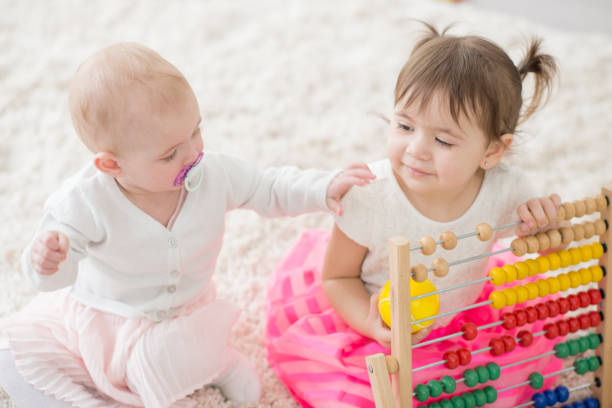The math materials in the Montessori classroom seem to prove Maria Montessori’s graceful genius. The materials are simple and easily understandable. A child learns mathematics not with the prejudice that it is difficult, but as a kind of game, an enjoyable job. The child, whose first experiences are pleasurable, no longer has reason to fear mathematics. Since the child already tastes success the first time, he knows that he can do it in the next steps.
Mathematics materials have always appealed to children. The reason for this is that the child has a self-confidence based on success during the operations that he can control while learning mathematics.
Mathematics is a completely abstract type of knowledge. It is the work of a great genius to be able to put this abstraction into the hands of the child by making it concrete. The important thing is not the correctness of the operation performed by the child, but the learning of the mechanism of mathematics and mathematical concepts. Moreover, since Montessori materials have an error control feature, an incorrect result will be obvious immediately. The positive experiences that the child receives about mathematics during this period will enable him to have the attitude of being able to succeed throughout his life.
Mathematics materials consist of tools that explain numbers, mathematical facts and mathematical operations. Each material follows the next, and one material forms the basis of the next. Learning mathematics by living is possible by keeping mathematical concepts in hand. The child begins to meet mathematics from the age of two, and the six-year-old child now develops from concrete to abstract operations. At the age of six, children can perform four operations with four-digit numbers, solve two- or three-operation questions, and have learned basic geometric concepts. Moreover, children did not have any prejudices or negative perceptions about mathematics while working with these materials.
In Montessori education, children learn numbers and what these numbers mean, how to read and write numbers from 1 to 9000, four operations, the concept of fractions, and introductory geometric concepts.
Maria Montessori recognizes that every child can learn mathematics if it is taught clearly from the start. The daily life skills and sensory materials studied until then laid the groundwork for mathematics. The child sees, touches and learns that with gold beads, the unity bead creates a point, the ten bead a line, the hundredth bead a plane, and the thousandth bead a cube, that is, a volume. Then, while playing the bank game with these, he learns to add, subtract, multiply, divide, but does not memorize it. Seguin sees with his eyes that 14 is actually a 10 and a 4, touches it and does it himself. These children almost play with mathematics in the later part of their education life. The math lesson, which everyone fears, is a part of life for these children whose mystery is solved.
